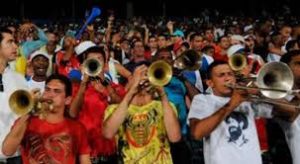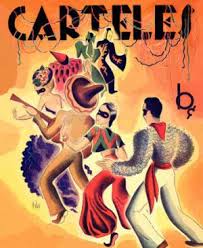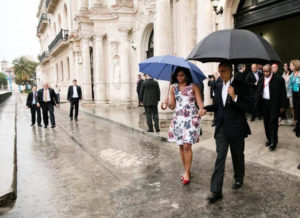POPULAR CUBAN SAYINGS: “IN CUBA, WITHOUT CONGA THERE IS NO BASEBALL”. “HISTORY.
In 1901, with evident patriotic overtones, the Cuban Baseball League began its history, organizing a championship with “Habana”, “Almendares”, “Cubano”, San Francisco”, and “Fe” Clubs.
Shortly before the start of the game, the chords of the Jardinera were heard: “From the Cuban garden we will cut flowers …”. The great conga of the comparsa was located in the place where it would always be later, between home and the third-base dugout, that of the home club or local team. But other sources say that years before the modern Cuban baseball league was established, the conga was present, although in the streets and as part of the celebration of the victory of the local team.
It is said that in 1912 the “Anchorites of Faith”, (what a little name!) A ball team was the first to be animated with a conga. Fe must have been an out-of-league team because they had Mike González, Adolfo Luque, and Julián Castillo in their line-up.
During the 1950s, Cienfuegos featured Papá Boza’s conga from Matanzas, who also encouraged the Cubans Sugar Kings supported by Roberto “Bobby” Maduro, owner of the Triple-A club.
And of course, we have to talk about the conga de los Industriales at the Latin American stadium. Nobody in Cuba imagines a ball game without a loud conga in the stands. And much less if the team on the ground is Industrial.
A ball game in Cuba without a conga or at least a trumpet and a tumbadora is something insipid, the same heritage that we have from the passion for the ball we have for the conga as an expression of joy. That is why there is not a single conga in the stadiums, but several, and at least in the Latin American stadium, with the large emigration, legal or illegal, that exists in Havana, it is not known if the conga that sounds the hardest is the one that supports the Industrialists or the interior teams. But they all give strength to the team and the players.
Unfortunately for the Cuban, nowadays the ball is dead in Cuba, waiting to be declared a corpse and not even the congas can revive it.
For the Cuban, the conga is an instrument that can be used for anything. So much so that even José Luis Cortés, el Tosco, dedicated a conga to Barack Obama: “Obama, Obama, go crazy and come to Havana.”
And all this has happened despite the isolation in which the revolution plunged our culture and has made it despite everything and even despite the Internet a perfect stranger, the market today is a terrain where it is difficult for a Cuban to hit a home run. And proof of this is that some Cuban executives themselves, who forgot their roots and are believed to have invented new ones that reflect us, say disparagingly: it sounds very Cuban or in boxing and in other disciplines: it has the Cuban style and Like the players, they have a hard time adjusting to acting in the major leagues.
Forget the Dominicans, Puerto Ricans, and Venezuelans in any sphere: They are there because Cuba was absent for half a century, their future is not where they are today. In music, in sports, in tourism, and in many other things, they cannot compete with the Cuban. Despite our own obstacles and those of our own people, the future is uncertain but full of great opportunities.
DICHOS POPULARES CUBANOS: “EN CUBA, SIN CONGA NO HAY PELOTA”. HISTORIA.
En 1901, con evidente matiz patriótico, inicia su historia la Liga Cubana de Béisbol, organizando un campeonato con los clubs de “Habana”, “Almendares”, “Cubano”, “San Francisco” y “Fe”.
Poco antes del comienzo del juego se sintieron los acordes de la Jardinera: “Del jardín cubano cortaremos flores…”. La gran conga de la comparsa se situó en el lugar donde después siempre se encontraría, entre el home y el dugout de tercera base, el del home club o equipo local. Pero otras fuentes dicen que desde años antes de que se constituyera la Liga cubana moderna de pelota ya la conga se encontraba presente, aunque en las calles y como parte de la celebración del triunfo del equipo local.
Se dice que en 1912 los “Anacoretas del Fe”, (!qué nombrecito!) un equipo de pelota fue el primero en ser animado con una conga. El Fe tiene que haber sido un equipo fuera de liga porque tenía en su alineación a Mike González, Adolfo Luque y Julián Castillo en su alineación.
Durante la década de los 50 el Cienfuegos contó con la conga matancera de Papá Boza, que también animó a los Cubans Sugar Kings apoyados por Roberto “Bobby” Maduro, dueño del club de Triple A
Y por supuesto que hay que hablar de la conga de los Industriales en el estadio Latinoamericano. Nadie en Cuba se imagina un juego de pelota sin una conga con mucho ruido en las graderías. Y mucho menos si es Industriales el equipo en el terreno.
Un juego de pelota en Cuba sin una conga o al menos una trompeta y una tumbadora, es algo insípido, la misma herencia que tenemos de la pasión por la pelota la tenemos por la conga como expresión de alegría. Por eso ya en los estadios no hay una sola conga, sino varias y al menos en el estadio Latinoamericano, con la gran emigración, legal o ilegal, que hay en La Habana, no se sabe si la conga que suena más dura es la que apoya a los Industriales o a los equipos del interior. Pero todas le dan fuerzas al equipo y a los jugadores.
Para desgracia del cubano, hoy en día la pelota está muerta en Cuba, a la espera de ser declarada cadáver y ni las congas la pueden revivir.
Para el cubano, la conga es un instrumento que sirve para cualquier cosa. Tal es así que hasta José Luis Cortés, el Tosco, le dedicó una conga a Barack Obama: “Obama, Obama, vuélvete loco y ven Pa’ La Habana”.
Y todo ello ha ocurrido pese el aislamiento en el que la revolución sumió a nuestra cultura y la ha hecho pese a todo y hasta pese a Internet una perfecta desconocida, el mercado es hoy un terreno donde a un cubano le resulta difícil batear un jonrón. Y una prueba de ello está en que algunos propios ejecutivos cubanos, que se olvidaron de sus raíces y se cree que inventaron otras nuevas que nos refleja, dicen despectivamente: suena muy cubano o en el boxeo y en otras disciplinas: tiene el estilo cubano y como también les pasa a los peloteros, les cuesta mucho trabajo acomodarse a actuar en las ligas mayores.
Olvídense de los dominicanos, puertorriqueños y venezolanos en cualquier esfera: Están ahí porque Cuba estuvo ausente medio siglo, su futuro no está en lo que son hoy. En la música, en el deporte, en el turismo y en muchas cosas más, no pueden competir con el cubano. A pesar de nuestras propias trabas y de las de nuestra propia gente el porvenir es incierto, pero lleno de grandes oportunidades.
Agencies/ Wiki/ MemoriasCubanas/ Carlos RodriguezB./ Internet Photos/ Arnoldo Varona/ www.TheCubanHistory.com
THE CUBAN HISTORY, HOLLYWOOD.
















